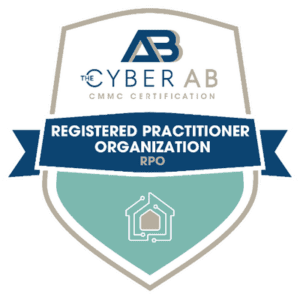In today’s rapidly changing business landscape, harnessing the power of Artificial Intelligence (AI) has become imperative. AI is not just a buzzword; it’s a transformative technology that can revolutionize the way businesses operate and innovate. In this blog post, we’ll explore the importance of AI and provide you with valuable tips for incorporating AI, like ChatGPT, into your process improvement journey.

Importance of AI in Today’s Business LandscapeThe business world is experiencing a seismic shift, driven by advancements in technology. AI has emerged as a game-changer. It’s no longer a luxury; it’s a necessity for staying competitive. AI has the potential to:
- Boost Efficiency: By automating repetitive tasks, AI can free up valuable time and resources.
- Enhance Decision-Making: AI can provide data-driven insights to make more informed decisions.
- Drive Innovation: AI-powered tools can spark creativity and help businesses stay ahead of the curve.
- Improve Customer Experiences: AI can personalize interactions and provide quicker, more relevant responses.
Understanding AI
AI, or Artificial Intelligence, refers to the simulation of human intelligence processes by machines. Its applications span across various domains, from natural language processing to robotics. Just as smartphones evolved from basic communication devices to powerful pocket computers, AI is continually advancing, offering increasingly sophisticated capabilities.
Benefits of AI
The advantages of integrating AI into your business processes are immense:
- Brainstorming: AI can assist in brainstorming sessions by generating ideas or solutions.
- Marketing Strategies: AI can analyze vast amounts of data to refine marketing strategies.
- Efficiency: AI has the potential to provide answers with astonishing accuracy, often reaching 80-90%, without relying on copy-pasting.
How to Start Using AI
If you’re eager to embark on your AI journey, here are some essential steps:
- Identify Your Needs: Determine where AI can bring the most value to your processes.
- Choose the Right Platform: Explore the top AI platforms available and select one that aligns with your goals.
- Familiarize with AI Terminology: Understanding key AI terms will facilitate effective communication and usage.
 Examples of AI Conversations
Examples of AI Conversations
To demystify AI’s practical applications, consider these real-world examples:
- Content Generation: AI like ChatGPT can generate high-quality content, saving time and effort.
- Customer Engagement: AI can answer customer queries promptly and engage in dynamic conversations.
- Q&A Assistance: It can assist in answering a wide range of questions accurately.
Sparking Conversations
We encourage you to brainstorm how AI could benefit your business. AI isn’t just a tool; it’s an opportunity for awareness and innovation. By exploring AI’s potential, you can unlock new possibilities and stay ahead in your industry.
Common Pitfalls
While AI offers immense potential, it’s essential to be aware of potential challenges:
- Lack of Human Oversight: Relying solely on AI without human verification can lead to errors.
- Ineffective Usage: Surprisingly, many businesses don’t use AI effectively, missing out on its full potential.
Avoiding Pitfalls
To make the most of AI, follow these tips:
- Human Verification: Always have a human review AI-generated content.
- AI as a Tool: Remember, AI is a tool, not a debating partner. Avoid engaging in arguments with it.
 Security Risks
Security Risks
Using AI involves inherent security risks that can potentially expose sensitive data and infrastructure vulnerabilities. Here are four risks to watch out for:
- Data Privacy: Use caution when sharing personal info, as it may be logged. Organizations can store interactions, posing privacy risks.
- Ethical Concerns: Ensuring responsible AI use is challenging due to diverse applications.
- Bias Information: AI models may produce biased content, even with bias mitigation efforts.
- Cybersecurity Risks: Vulnerabilities in AI models can be exploited, and secure infrastructure is vital to prevent data breaches.
Safety Steps
Here are six steps Alluvionic recommends when using AI:
- Protect Sensitive Information: Never share sensitive data or confidential details with the AI, ensuring the security of intellectual property and customer information.
- Compliance and Policies: Always adhere to your organization’s internal policies and data privacy guidelines while using the AI tool.
- Report Suspicious Activity: Promptly report any unusual or concerning behavior of the AI to your supervisor or IT security team.
- Secure Communication: Use secure communication channels and encryption methods to interact with the AI, safeguarding the information exchanged.
- Stay Informed: Educate yourself about data retention policies and applicable regulations, ensuring compliance with data protection requirements.
- Continuous Monitoring: Regularly monitor and evaluate the AI’s performance, security, and value to maintain a safe and effective tool for your organization.
 Practical Steps
Practical Steps
Ready to get started? Here’s a step-by-step guide:
- Identify Use Cases: Pinpoint areas where AI can make an impact.
- Choose a Platform: Explore AI platforms and select the one that suits your needs.
- Training: Familiarize yourself and your team with AI terminology and concepts.
- Experiment: Begin experimenting with AI in controlled environments.
- Feedback Loop: Continuously improve and refine your AI processes.
Conclusion
AI is a powerful tool that can enhance your business processes and drive innovation. By understanding its basics, leveraging its benefits, and avoiding common pitfalls, you can embark on a successful AI journey. Remember, AI is here to assist and empower, so use it wisely and keep learning to stay at the forefront of this transformative technology.
Excited to learn more? Contact us to help you with your next project!


























